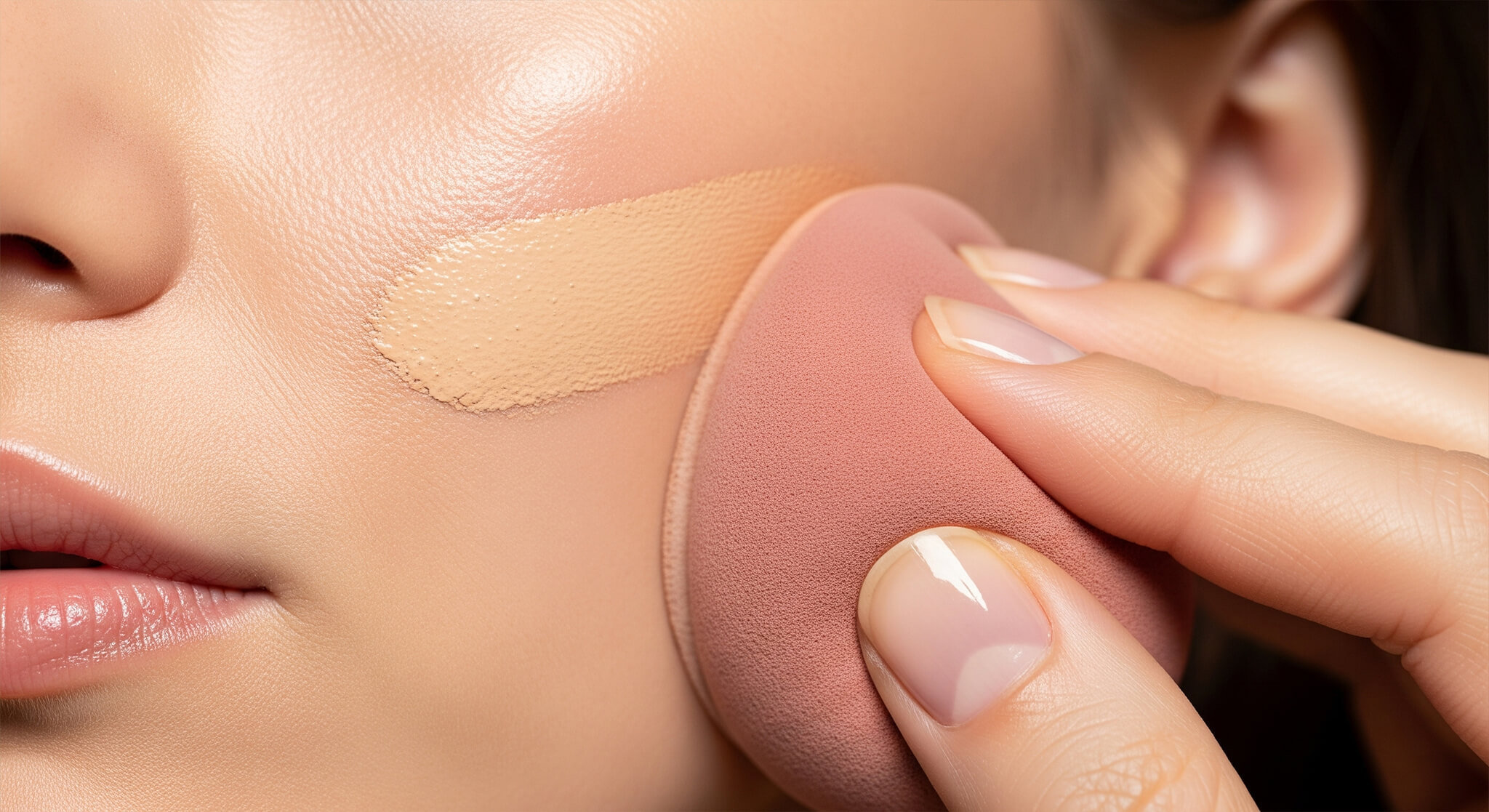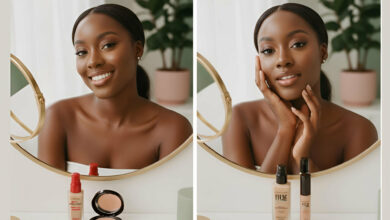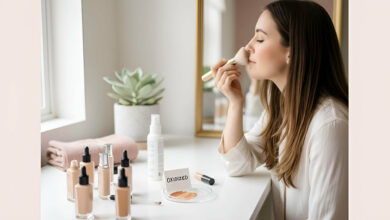How to Stop Makeup From Looking Cakey & Patchy
Table of contents
The Quest for a Flawless, Skin-Like Finish: Why Does Makeup Look Cakey?
It’s one of the most frustrating makeup moments: you apply your foundation hoping for a smooth, flawless finish, but an hour later you look in the mirror only to see a disaster. Your makeup looks heavy, it has settled into every fine line, and it’s clinging to dry patches you didn’t even know you had.
This is the dreaded “cakey” and “patchy” makeup effect. But what does that really mean?
- Cakey Makeup: A thick, obvious, and often powdery layer of makeup that sits on top of the skin instead of blending into it, looking more like a mask than a flawless base.
- Patchy Makeup: An uneven, separated application where makeup clings to certain dry areas while sliding off oily spots, resulting in an inconsistent finish.
Achieving a seamless, skin-like finish is the ultimate goal, and it’s achievable for everyone. The secret isn’t a magic product; it’s about the right prep, the right formula, and the right technique.
Identifying the Culprit: The Top 4 Reasons Your Makeup Looks Unnatural
Reason 1: Improper Skin Prep (The Most Common Mistake)
Makeup can never look smooth on a rough, dehydrated canvas. If you’re applying foundation over dry patches or layers of dead skin cells, the makeup has nowhere to go but to cling to that texture, resulting in a patchy, uneven finish from the start.
Reason 2: Using Too Much Product
This is the most direct cause of cakey makeup. In an attempt to cover imperfections, it’s easy to fall into the trap of applying layer after heavy layer of Foundation and Concealer. This creates a thick mask of product that is guaranteed to crease, look heavy, and settle into lines.
Reason 3: The Wrong Formula for Your Skin Type
Using products that fight against your skin type is a recipe for disaster. A super-matte, long-wearing Foundation on dry skin will suck out any remaining moisture and look flat and patchy. Conversely, a very dewy, oil-based formula on very oily skin can break down and separate as your natural oils come through.
Reason 4: Incorrect Application Tools & Technique
Aggressively wiping or smearing foundation with your fingers or a dense brush can lead to streaks and a heavy, uneven finish. Similarly, packing on heavy layers of setting powder with a powder puff, especially under the eyes, can instantly create a dry, cakey makeup look.
Your Step-by-Step Guide to a Flawless, Non-Cakey Finish
Step 1: Perfect Your Skincare Prep (The 5-Minute Rule)
- Exfoliate Regularly: Gently exfoliate your skin 1-2 times a week with a chemical exfoliant (like a glycolic or lactic acid toner) to remove the dead skin cells that cause patchiness.
- Hydrate Intensely: Before makeup, always apply a moisturizer suited to your skin type.
- Crucial Tip: Wait at least 5-10 minutes for your skincare to fully absorb before you even think about makeup. Applying foundation to wet or tacky skin will cause it to slide and separate.
- Use the Right Primer: A good Primer creates a smooth barrier between your skin and your makeup. Choose one based on your needs: hydrating for dry skin, pore-blurring for texture, or mattifying for oily skin.
Step 2: Apply Your Foundation the Right Way
- Start with Less: Dispense a small amount of Foundation on the back of your hand. Remember: you can always add more, but it’s very difficult to take it away.
- Use a Damp Makeup Sponge: For the most foolproof, skin-like finish, use a damp Makeup Sponge. This sheers out the product slightly and allows you to press it into the skin. Use a gentle bouncing or “stippling” motion—never wipe or drag the sponge across your face.
Step 3: Strategic Concealing
Instead of a heavy layer of foundation all over, let your skin show through and use a lightweight, hydrating Concealer only where you need extra coverage—under the eyes, around the nose, or on specific blemishes. Blend the edges seamlessly until they disappear.
Step 4: Set, Don’t Bake: The Art of Using Powder
The heavy “baking” technique seen on social media is a major cause of a cakey look in real life. Instead, take a large, fluffy makeup brush, dip it into a finely milled, translucent powder, and tap off any excess. Lightly dust the powder only on the areas that tend to get oily, like your T-zone.
Step 5: Melt It All Together with a Setting Spray
This is the final magic step that brings your look together. A good setting spray or a hydrating facial mist will take away any lingering powdery look, meld all the makeup layers together, and give your skin a beautiful, natural, and seamless finish.
SOS: How to Fix Cakey Makeup on the Go
If you notice your makeup looks heavy midday, don’t just add more powder.
- First, use a blotting paper to gently lift away excess oil.
- Next, spritz your face with a hydrating mist or setting spray to re-moisturize the makeup.
- While your skin is slightly damp, use a clean finger or a sponge to gently press and re-blend the areas that look heavy or have creased. Your makeup will look instantly refreshed and less cakey.
Cakey Makeup FAQ
My under-eyes always look dry and cakey. Why?
This is usually a combination of using a Concealer that’s too dry or thick, applying too much product, and setting with too much powder. Switch to a hydrating, serum-like concealer, apply it sparingly, and set with the tiniest amount of powder on a small, fluffy brush.
Why does my foundation separate on my nose and chin?
This is often due to excess oil on your skin breaking down the makeup. Ensure you’re using a good oil-controlling or pore-filling Primer in those specific areas and be sure to set them lightly with powder to increase longevity.
Is it better to use a brush or a sponge to avoid a cakey look?
For beginners, a damp Makeup Sponge is the most foolproof tool. Its gentle bouncing motion builds up thin, even layers and ensures a seamless blend that is very difficult to overdo, making it the best choice for avoiding a cakey makeup finish.
What’s your number one tip for avoiding cakey makeup? Share your holy grail product or technique in the comments!






